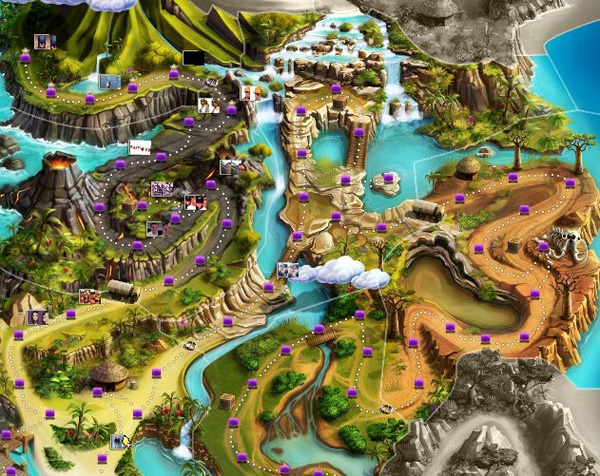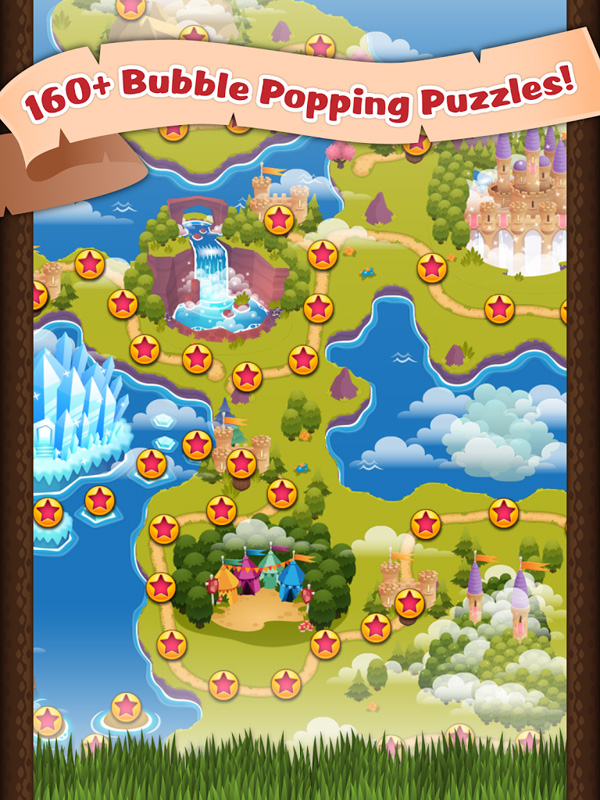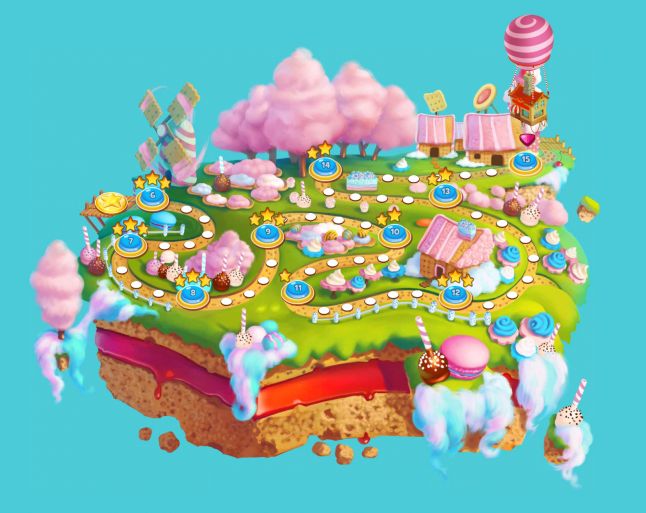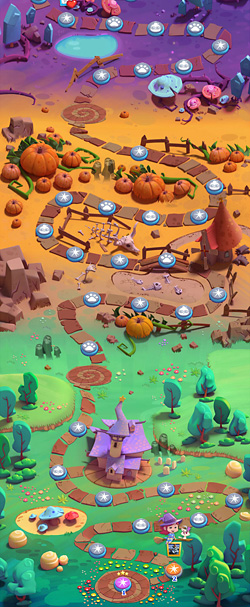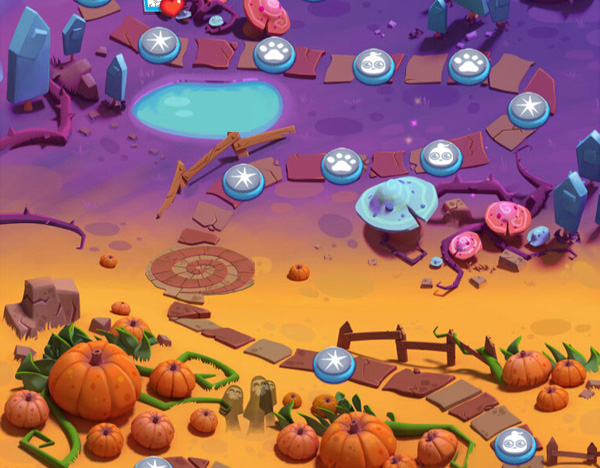Casual games: how do I choose the correct map format?
The Gamasutra resource regularly publishes articles by developers, art directors and game designers about the industry. We choose the most interesting ones and share them with you. In today’s article, Junxue Li, CEO of Novtilus Art studio, shares his thoughts on what kind of maps there are for mobile games and how to choose the format that suits your project specifically.
Our team created cards for games of different genres – three-in-a-row, slots, loot, and so on. All of them were similar to each other: in each case, progress was displayed in the form of levels located on a winding path.
Here are some conclusions that I came to in the process of work and which I want to share. I think they can be useful to game designers or game artists.
In this article, for ease of perception, I have divided the frequently encountered types of card design into several formats.
Traditional formatGames in which he meets: Bubble Safari, Bubble Witch Saga
The world map looks “natural”, it has valleys, seas, forests and a road that goes between them.
The style is taken from old role-playing games. As a rule, you can travel freely through the worlds with such a map, and at the same time it gives an idea of where the player is.
This format has inherited many advantages from its predecessors: it conveys the atmosphere of the game world and is closely related to the plot. But now in games of the three-in-a-row and bubble genre, the passage of levels is mostly linear, that is, there is no possibility of free movement. Therefore, this format may not suit them.
With this type of map, the world or part of it acts as a single whole. There are themed areas – volcanoes, deserts, villages. Every such site is a big level. Since they are all interconnected, the map must be carefully planned. It lacks flexibility – it is quite difficult to replace sections or update the level. This map is suitable for games in which the levels are rarely updated or not updated at all.
Smartphone users, for the most part, are not enthusiastic about this type of cards. Since the screen is relatively small, they either see a small part of the map, or they have to scroll the map endlessly to view the remaining parts. Well, or reduce the whole map – to the detriment of detail.
From the point of view of the cost of art, such a card is quite expensive. In order for the map to meet the requirements of high-resolution screens, it must be of huge size – only then it could be brought closer without loss of quality. The whole map can easily be three times larger than the total screen.
On the other hand, this type of card allows you to save money: if the game is of the three-in-a-row or slot genre, parts of the card can be used instead of the background of the level. In these two types of games, the center of the screen is usually covered with game elements. In the case of money, such a trick will not be possible to pull off.
IslandGames that use this format: Candy Crush Saga, Bubble Blaze
In many ways, this type of map inherits the traditional format – with all its pros and cons.
The main difference is that the regions in it are not interconnected, and the map itself is divided into “islands”. Each thematic section/large level is represented by a separate fragment of the map, and the road goes around it. The advantage of the format is that you can add new sections/levels as much as you want.
This format is suitable for games that require monthly updates. At the same time, such a card looks no less attractive than a traditional type of card.
It will not work here to cut out a piece of the map and substitute it as a background: there are not enough details.
Big IslandGame using this format: Cookie JAM
As already mentioned, the main drawback of the traditional format is that it is not flexible enough.
The map in the form of a “big island” offers a solution: each large level, divided into 10-20 small parts, is represented as an island surrounded by the sea or airspace.
We can say that this is a traditional format in miniature. When you need to add new levels, you just create a new island for them.
The trick of cutting out a piece of the map and substituting it instead of the background also works great here.
Vertical scrolling
Games in which he meets: Bubble Witch Saga 2, Farm Hero SagaThis is probably one of the most popular formats – the developers are even remaking the formats I have already mentioned for this type of card.
Here the thematic regions / levels go along a vertical strip, each new region is located above the previous one. This type of map does not allow you to zoom in and out of the map, and you will not be able to scroll it to the right or left either. The user can only move up and down to get to different parts of the game world.
The format is best suited for smartphones with a narrow screen: it naturally fits into it.
When new levels need to be added, they can always be “built on” from above.
In the same way as in the island/big island format, it is possible to develop separate independent parts and arrange them in a non-linear order.
The difficulty with this format is that you need to “glue” various thematic sections together so that it does not catch your eye.
For a large/small island, the sections are not directly connected to each other, so such a transition is not a problem. And then you have to “blur” the border of the transition. The most obvious way out is not to draw too many details on the border of the joint and make a smooth transition from one color of the terrain to another. To mask the place of gluing, you can add fog or clouds from above.
The trick I mentioned earlier also works in this format.
Other materials on the topic: How to hire game designers?

